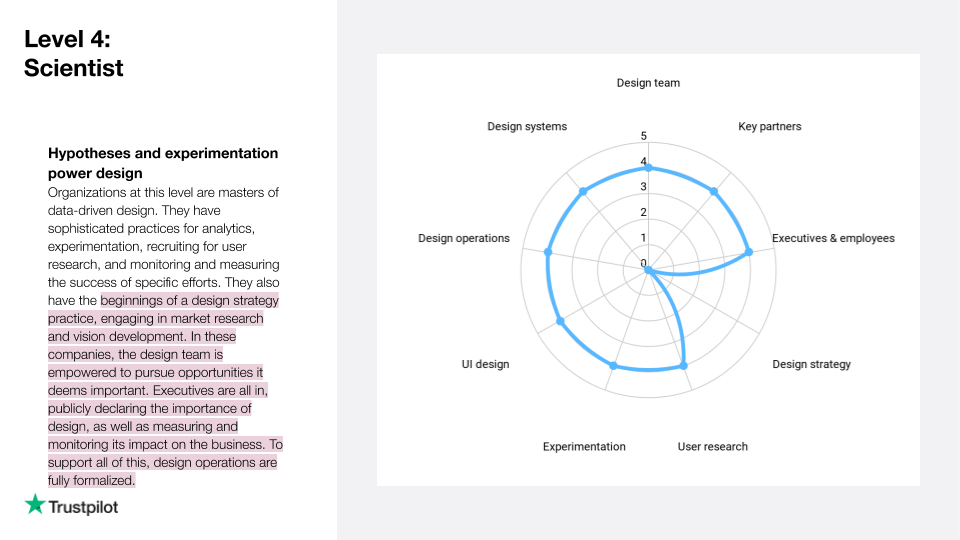Define design strategy through maturity evaluation
Leading a fairly mature design team with a dual-track agile approach was a great experience, but my director and I faced a challenge: a wealth of ideas for improving our practices without a clear direction. We needed a strategic way to prioritize our efforts and make sure we were focusing on the right initiatives. My goal was to create a data-driven roadmap that would help the team make more purposeful priority decisions and become more proactive.

To address this, I introduced a design maturity evaluation. This method served as a powerful discovery practice, a way to quickly gather insights on our strengths and weaknesses. It gave us an objective view of where we were and what opportunities would have the greatest impact on improving our overall design function.

For the first round speed, rather than precision was a priority, as we didn’t know if this method indeed provided good pointers or not. I set up the evaluation sheet, did some light interviews with design team members, performed the analysis, and created a summary view with clear recommendations for opportunities.

Based on our findings, we launched several key projects that directly addressed our strategic goals. We worked on user journeys and personas. We also focused on creating experience visions, which helped us to explore possible product futures. Finally, we prioritized growing and promoting people.
This experience was pivotal to my leadership philosophy. It showed me that taking the time to pause and reflect is crucial for making effective, proactive decisions. The confidence this evaluation gave us helped unite the team around a shared purpose and proved that a data-driven approach is the key to building a high-performing design team.
